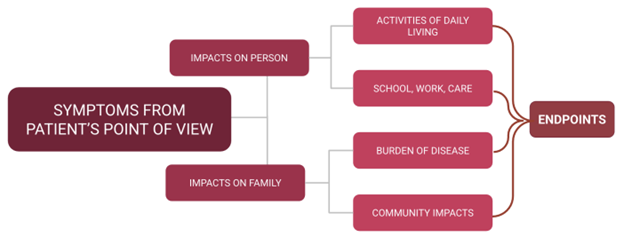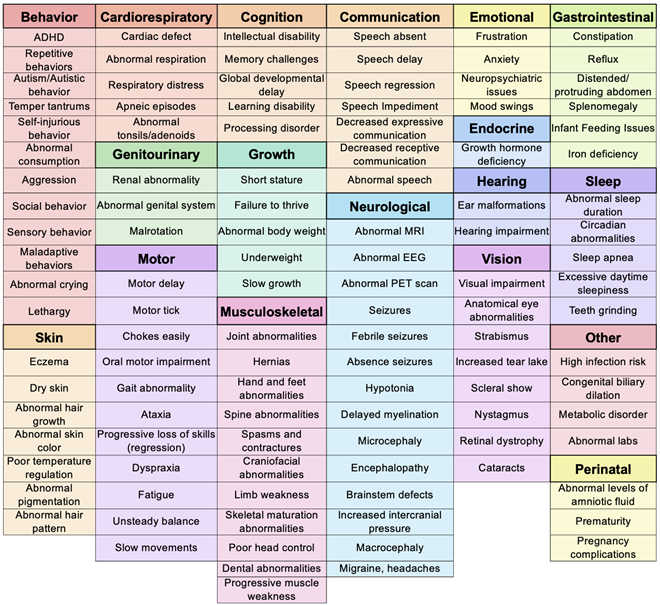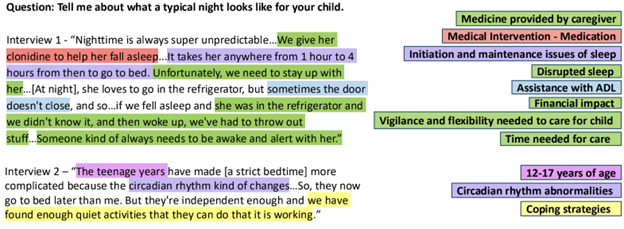OCNDS Disease Concept Model Study
The CSNK2A1 Foundation is partnering with COMBINEDBrain on a study to better understand the needs and experiences of individuals with Okur-Chung Neurodevelopmental Syndrome (OCNDS) and their caregivers. As part of this research, we are conducting one-time, audio-recorded interviews with people diagnosed with OCNDS or their caregivers. To broaden perspectives, we are also interviewing healthcare providers and educators to capture experiences outside of the home.
A disease concept model is a tool that helps researchers, doctors, and regulators understand what it’s really like to live with a specific condition. It’s built by gathering information directly from patients, families, and caregivers about the symptoms they experience, how those symptoms affect daily life, and what truly matters most to them. This is especially important in rare diseases, where each voice carries more weight and there may be limited published research. By creating a disease concept model, we can make sure that future research, treatments, and clinical trials focus on the things that have the biggest impact on real people’s lives. In addition, disease concept models capture information beyond published clinical manifestations, including psychosocial and familial impacts—areas largely overlooked in current OCNDS literature.
The figure below illustrates how qualitative interviews conducted in this study will inform future clinical trial endpoints. Symptoms of OCNDS rarely occur in isolation; they affect individuals, families, and support systems in interconnected ways. This research highlights the symptoms and impacts most meaningful to families, which may differ from those considered clinically significant.

This study involves several different stages:
01
Literature review and Draft Conceptual Model creation
02
Interviews with caregivers, educators, and healthcare providers
03
Coding and data analysis
04
Final Conceptual Model creation
1. Literature review and Draft Conceptual Model creation
A literature review of OCNDS publications was completed in the fall of 2024. Of the 168 studies identified that referenced OCNDS or the CSNK2A1 gene, only 20 directly discussed OCNDS symptoms and impacts. These studies were analyzed, and the findings were compiled to create a Draft Conceptual Model informed solely by published literature.

2. Interviews with caregivers, educators, and healthcare providers
Semi-structured qualitative interviews are being conducted to better understand the lived experience of OCNDS. Interviews will continue until no new concepts emerge. All interviews are audio-recorded, transcribed, and de-identified for analysis.
3. Coding and data analysis
Transcribed interviews will be coded using Dedoose, a qualitative research platform. Codes capture symptoms, individual impacts, caregiver impacts, medical interventions, and modifying factors. Below is an example of coding and concept identification for two interview excerpts, given the question of “Tell me about what a typical night looks like for your child.”

The highlighted codes pertain to various coding domains:
- Green = caregiver impacts
- Red = medical interventions
- Purple = symptoms
- Blue = individual proximal impacts
- Pink = demographic information
- Yellow = modifying factor
After coding all of the interviews, the data will be analyzed. Potential data analysis may look at the prevalence of symptoms over the lifespan, the symptoms that present the most individual or caregiver impacts, and the identification of new symptoms that have not been reported in the literature.
4. Final Conceptual Model creation
The final OCNDS Conceptual Model will integrate findings from both the literature review and qualitative interviews. Among its many uses, this model can serve as a resource for newly diagnosed families, a reference for providers, and a tool for future research and clinical trial development.
